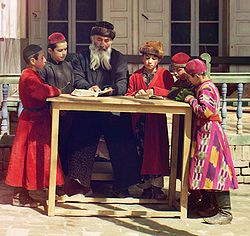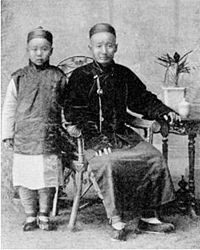Israel is–as far as I can tell–one of the sanest, least self-destructive states in the entire West. (Note: this is not to say that I love everything about Israel; this is actually a pretty low bar, given what’s happening everywhere else.) Their people are literate and healthy, they have a per capita GDP of 36.5k, (33rd in the world,) and they’re 18th globally on the Human Development Index. They don’t throw people off of buildings or have public floggings, and despite the fact that they have birth control and the state actually pays for abortions, the Jewish population still has a positive fertility rate:
The fertility rates of Jewish and Arab women were identical for the first time in Israeli history in 2015, according to figures released by the Israel Central Bureau of Statistics on Tuesday….Jewish and Arab women had given birth to an average of 3.13 children as of last year.
According to Newsweek:
This high fertility rate is not simply an artifact of Israel’s growing ultra-Orthodox or Haredi population; the non-Haredi fertility rate is 2.6. (This is, by the way, a far higher fertility rate than that of American Jews, which is 1.9; the replacement rate is 2.3.)
 And they’ve managed to resist getting conquered by their aggressive and numerically superior neighbors several times in the past century.
And they’ve managed to resist getting conquered by their aggressive and numerically superior neighbors several times in the past century.
Not bad for a country that didn’t exist 100 years ago, had to be built from the sand up, and is filled with people whom conventional wisdom holds ought to have been rendered completely useless by multi-generational epigenetic trauma.
Now, yes, Israel does get a lot of support from the US, and who knows what it would look like (or if it would exist at all,) in an alternative timeline where the US ignores it. Israel probably isn’t perfect, just interesting.
Harking back to my Measures of Meaning post, I propose that Israel has 4 things going for it:

1. Israelis have meaningful work. Their work has been, literally, to build and secure their nation. Israelis have had to build almost the entire infrastructure of their country over the past hundred years, from irrigation systems to roads to cities. Today, Tel Aviv is a city with a population of 430,000 people. In 1900, Tel Aviv didn’t exist.
Unlike the US, Israel has a draft: every Israeli citizen, male and female, has to serve in the Israeli army. (Obviously exceptions exist.) This is not seen as state-run slavery but part of making sure the entire society continues to exist, because Israel faces some pretty real threats to its borders.
The IDF even has a special division for autists:
Many autistic soldiers who would otherwise be exempt from military service have found a place in Unit 9900, a selective intelligence squad where their heightened perceptual skills are an asset. …
The relationship is a mutually beneficial one. For these young people, the unit is an opportunity to participate in a part of Israeli life that might otherwise be closed to them. And for the military, it’s an opportunity to harness the unique skill sets that often come with autism: extraordinary capacities for visual thinking and attention to detail, both of which lend themselves well to the highly specialized task of aerial analysis.
I suspect–based on personal conversations–that there is something similar in the US military, but have no proof.
My anthropological work suggests that one of the reasons people enter the military is to find meaning in their lives, (though this doesn’t work nearly as well when your country does things like invade completely irrelevant countries you don’t actually care about like Vietnam.)
2. Like I said, Israelis have above-replacement total fertility–meaning that many Israelis hail from large families, with lots of children, siblings, and cousins. Israelis appear to have managed to achieve this in part by subsidizing births (which probably will have some long-term negative effects for them,*) and in part by explicitly advocating high birth rates in order to prevent themselves from being out-bred by the Palestinians and to show that Hitler what for.
*ETA: See the comments for a discussion of dysgenic fertility on Israel.
 3. Religion is so obviously a unifying force in Israeli life that I don’t think I need to detail it.
3. Religion is so obviously a unifying force in Israeli life that I don’t think I need to detail it.
What about that fourth thing? Oh yes: Many of the Jews who don’t like the idea of “nations” and “ethno states” and “religion” probably moved to the US instead of Israel. The US got the SJW Jews and Israel got the nationalist Jews.
4. A sense of themselves as a distinct nation. As I’ve discussed before, this is not exactly genetic, due to different Jewish groups having absorbed about 50% of their DNA from the folks around them during the diaspora years, and of course a big part of the country is Arab/Palestinians, but there is still much genetically in common.
There is probably a lot I’m missing.
 Of course there are religious Jews in the US (and their numbers are growing relative to the secular Jewish population.) While Jews as a whole voted 70% for Hillary, only 56% of the Orthodox supported her. (I’ve seen different numbers elsewhere, but these are the ones I’ve been able to find a source for.)
Of course there are religious Jews in the US (and their numbers are growing relative to the secular Jewish population.) While Jews as a whole voted 70% for Hillary, only 56% of the Orthodox supported her. (I’ve seen different numbers elsewhere, but these are the ones I’ve been able to find a source for.)
(I suspect that America’s high-IQ secular Jews suffer from being in America instead of Israel. They don’t have religion to guide them, children to focus them, nor (in many cases) meaningful work. Without something positive to work towards, they turn to politics/ideology to provide meaning in their lives, while simultaneously suffering the psychological stress of knowing that the Holocaust was directed at people like them.)
But that’s irrelevant to Israeli Jews.
Long-term, I’m not bullish on Israel, given its precarious location, surrounded by nations that aren’t very fond of it–and I am not offering any opinions about the Israeli/Palestinian situation–but as first world nations go, it at least desires to keep existing.








